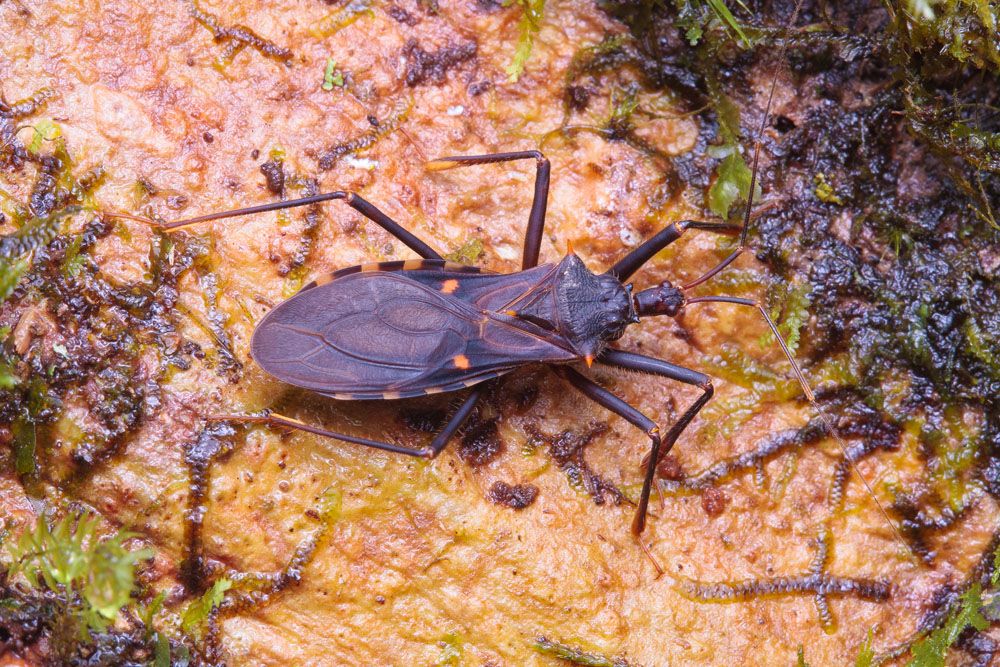
Assassian Bugs – Reduviidae
Assassin Bugs
Family: Reduviidae
Common Name: Assassin Bugs
Appearance: Assassin bugs are 5-40 mm long, having a three-segmented beak that is curved back in the space between the front legs, a distinct character of this family. They use their beak to pierce the prey and then suck the fluid. Adult assassin bugs have a variety of colors depending on the species. They can be dark brown, black, orange, reddish, grayish, or pale.
Host Plants or Food: Bugs, Caterpillars, Bees, Flies, Beetles.
Territory: North America, Western America, Australia.
Mode of Damage: They prey on different plant pests, so they are considered Beneficial Garden Insect.
Habits and Life History:
They are mostly found in gardens, landscapes, tree crops, etc.
Assassin bugs being the true bugs, develop through three life stages: Egg, Nymph, and Adult.
Eggs of most species are brown and oblong and glued to the plant surface.
Nymphs come out of the eggs and develop through five larger instars, and the last instar finally develops into a winged adult. Nymphs are dark, pale, or color resembles their adults. As they develop, wings start developing.
There is no pupal stage between the last instar and adult.
Assassin bugs produce two generations per year.
